|
|
 WEDEA -
Magic lantern slides of Dutch manufacture WEDEA -
Magic lantern slides of Dutch manufacture |
|
Tijl Uilenspiegel Wedea publishers from Amsterdam released various lantern slides in the 1930s under the name 'City-Series'. This series Tijl Uilenspiegel consists of 12 magic lantern slides in the size 8.2 x 8.2 cm. The lantern slides are equipped with a cover glass that protects them from damage. |
The drawings of Kate Philipsen are coloured by hand. Kate was known for the illustrations in the children's book series written by H.J. Jacobs who came on the market in November 1930 (source: Nieuwsblad voor den Boekhandel). From the enclosed text it can also be seen that the other titles in this series were: Little Red Riding Hood, Snowwhite, Gulliver at the Giants, Gulliver at the Dwarves, Robinson Crusoe and One eye, two eyes, three eyes. |
|
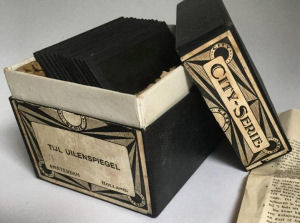 |
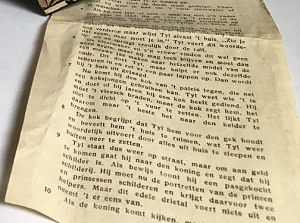 |
|
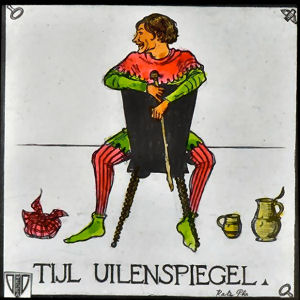 |
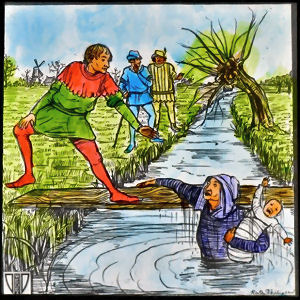 |
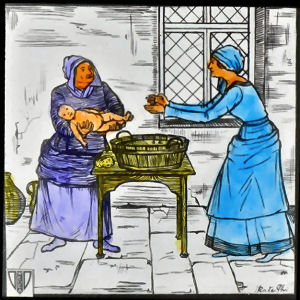 |
|
1. Tyl
Uilenspiegel, who has played his whole life. (Dutch text from the attached text sheet, translated by the webmaster.) |
2. Tyl is baptized for the second time. When he returns on his nurse's arm from the first baptism, the woman goes wrong and falls off the shelf in the ditch. Tyl's father gets them out. | 3. Tyl is baptized for the third time. At home he goes to bath again to wash off the dirty ditch water. |
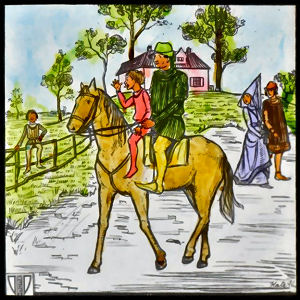 |
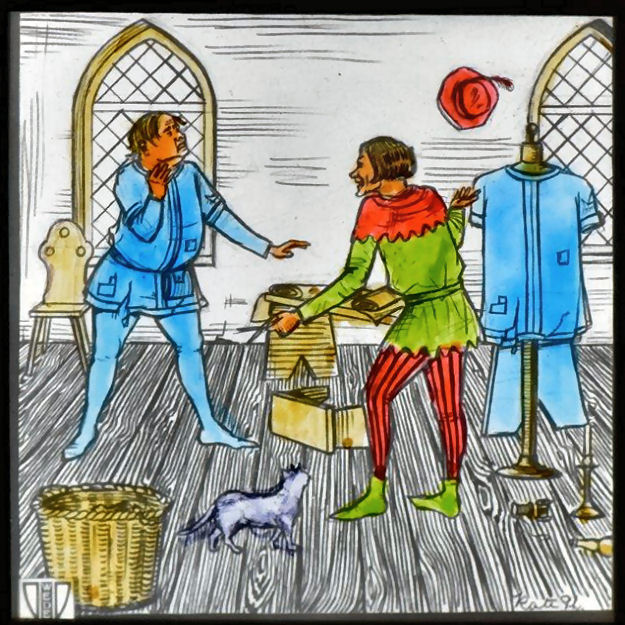 |
|
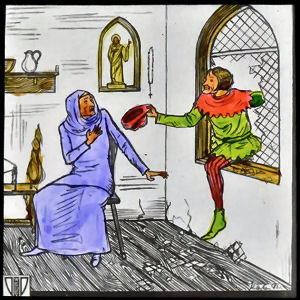 |
||
| 4. When he is about eight years old, Tyl and his father can go to town.He is sitting on the front of the horse and the father does not understand why all people are standing in the road and are following his Tyltje so angry with their eyes. | 5. Tyl is now an adult and looking for work.Then he meets an old friend who wants to teach him the trade. He has to go a bit further, but already points out the house to Tyl. "You see that window, you have to go in there.'Tyl takes this words literally and jumps happily through the window. | 6. The tailor and his wife do not think this is a good start, but he is allowed to stay and must make a new coat to the same model of the old one.Tyl does this, but also cuts the same cracks and puts a few pieces on it. Then he is chased out of the house. |
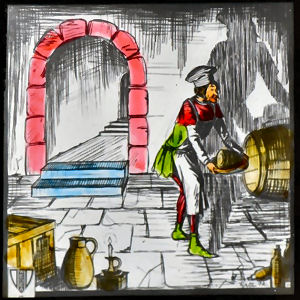 |
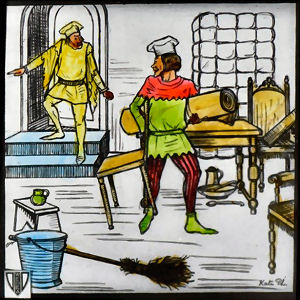 |
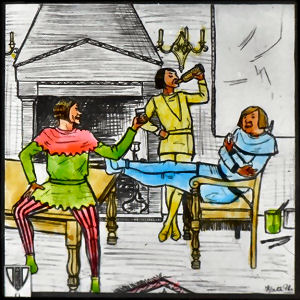 |
| 7. Now he meets the cook of the palace, who can just use a cook's boy. Tyl knows who it is and does if he has served for years with a cook. He must roast the meat, but the cook tells him not to put it too close to the fire.It seems Tyl the best thing to bring it to the cellar. | 8. The cook understands that Tyl is fooling him and orders him to clear the house, which Tyl again verbally performs by dragging everything out of the house and putting it outside. | 9. Tyl is on the street again, but to get money he goes to the king and says he is a painter. As proof he shows a newly purchased painting. He must now paint the portraits of the princes and princesses and receives two helpers. But this noble threesome does not do anything but only lazes around. |
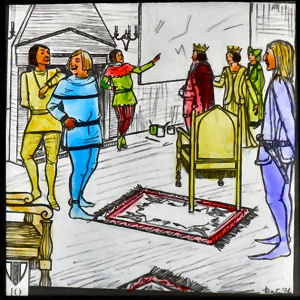 |
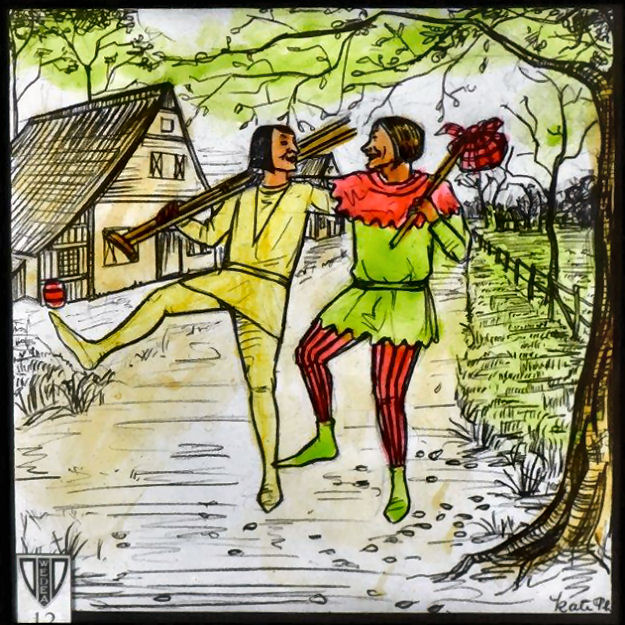 |
|
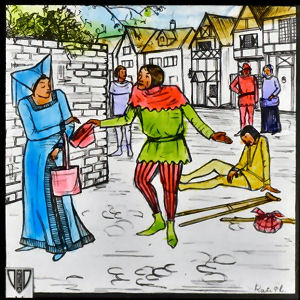 |
||
| 10. When the king comes to look, Tyl makes him believe that only sensible people can see what is getting up, but madmen see nothing of the paint. The king says he loves it for fear that one will think he is crazy. The whole court is full of admiration. When they finally find out, Tyltje has disappeared. | 11. Tyl continues with his two friends. To get money one one of them simulates that he can not walk anymore and has severe pain. Tyl goes around with his hat, and out of pity everyone gives something. | 12. But the last picture shows that he was as healthy as a fish. |
|
From the fisherman
and his wife (In the Netherlands also known as 'Vrouwtje Ulebuut en Mannetje Tinterlanteen' or 'Piggelmee) |
|
|
'From the fisherman and his wife' is a
fairy tale from Kinder- und Hausmärchen (KHM19), written by the
Brothers Grimm. A poor fisherman lives with his wife in an upturned flower pot by the sea. One day the fisherman catches a fish that claims to be an enchanted prince. The fish asks the fisherman to release him in exchange for a wish. At the behest of his wife, he wishes they could live in a decent shack. The wish is fulfilled; when the fisherman comes home, his wife is in a house that is completely furnished. But the woman is soon dissatisfied; she thinks that the fish could also have given a large castle. This wish is also fulfilled. The husband is satisfied, but his wife is not. Now that she lives in a castle, she wants to become queen. Later she even wants to become empress and later still the pope. The woman is still not satisfied: she wants to become God herself and thus have the power to make the sun and moon appear. The man conveys his wife's wish to the fish. When he returns home his wife finds his wife again this time in the pot they used to live in, as punishment for her pride. They are just as poor as in the beginning. The woman realizes that she has gone too far and asks her husband never to abandon her again: they are together and that is enough. The slides are 8.2 x 8.2 cm in size and all bear the well-known WEDEA trademark with the shield. A few plates are signed with a monogram 'MB'. |
|
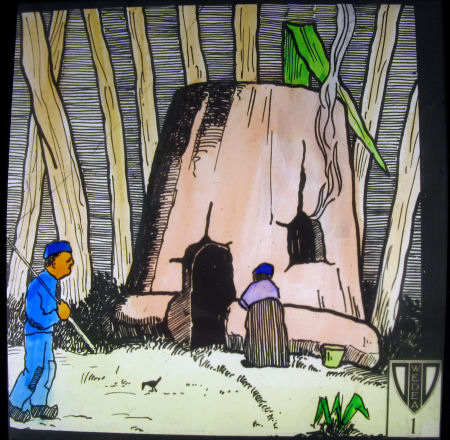 |
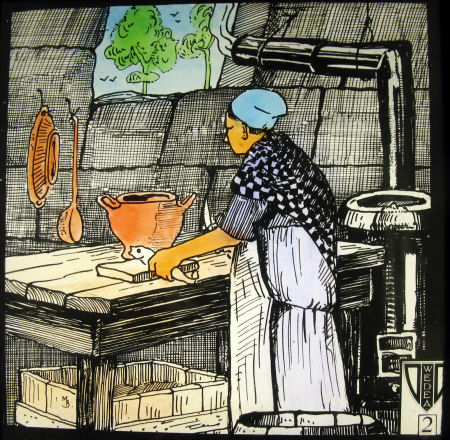 |
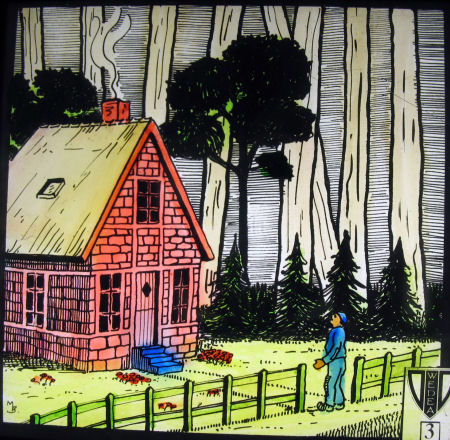 |
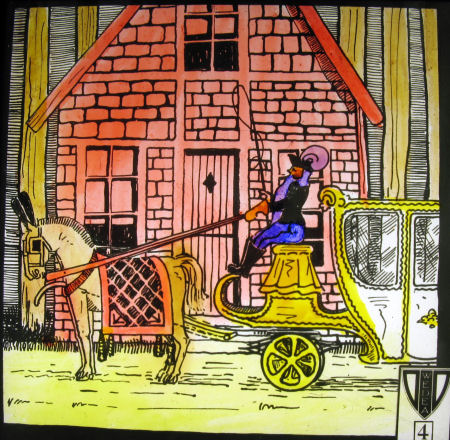 |
 |
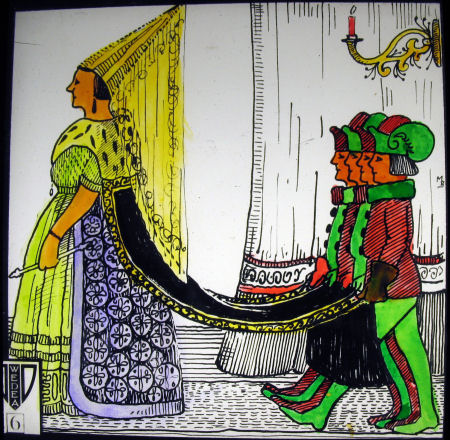 |
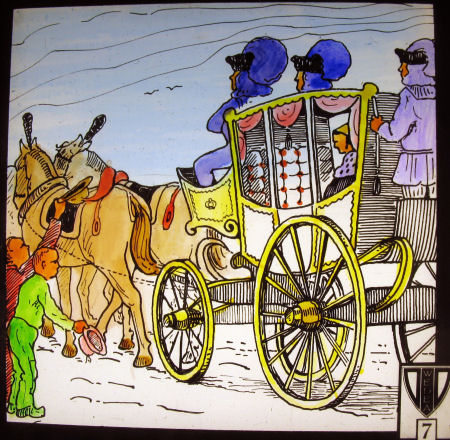 |
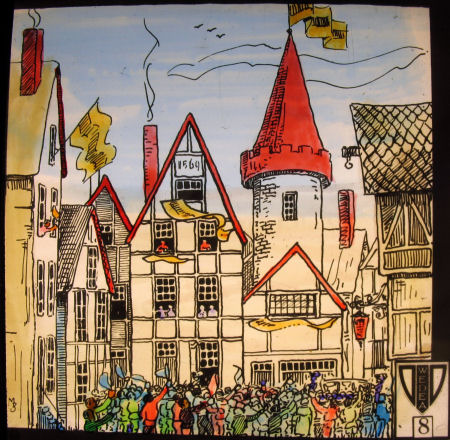 |
 |
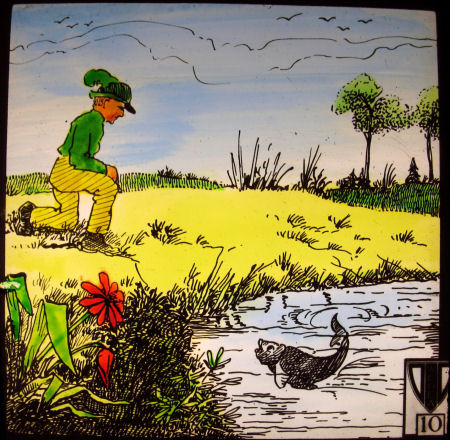 |
 |
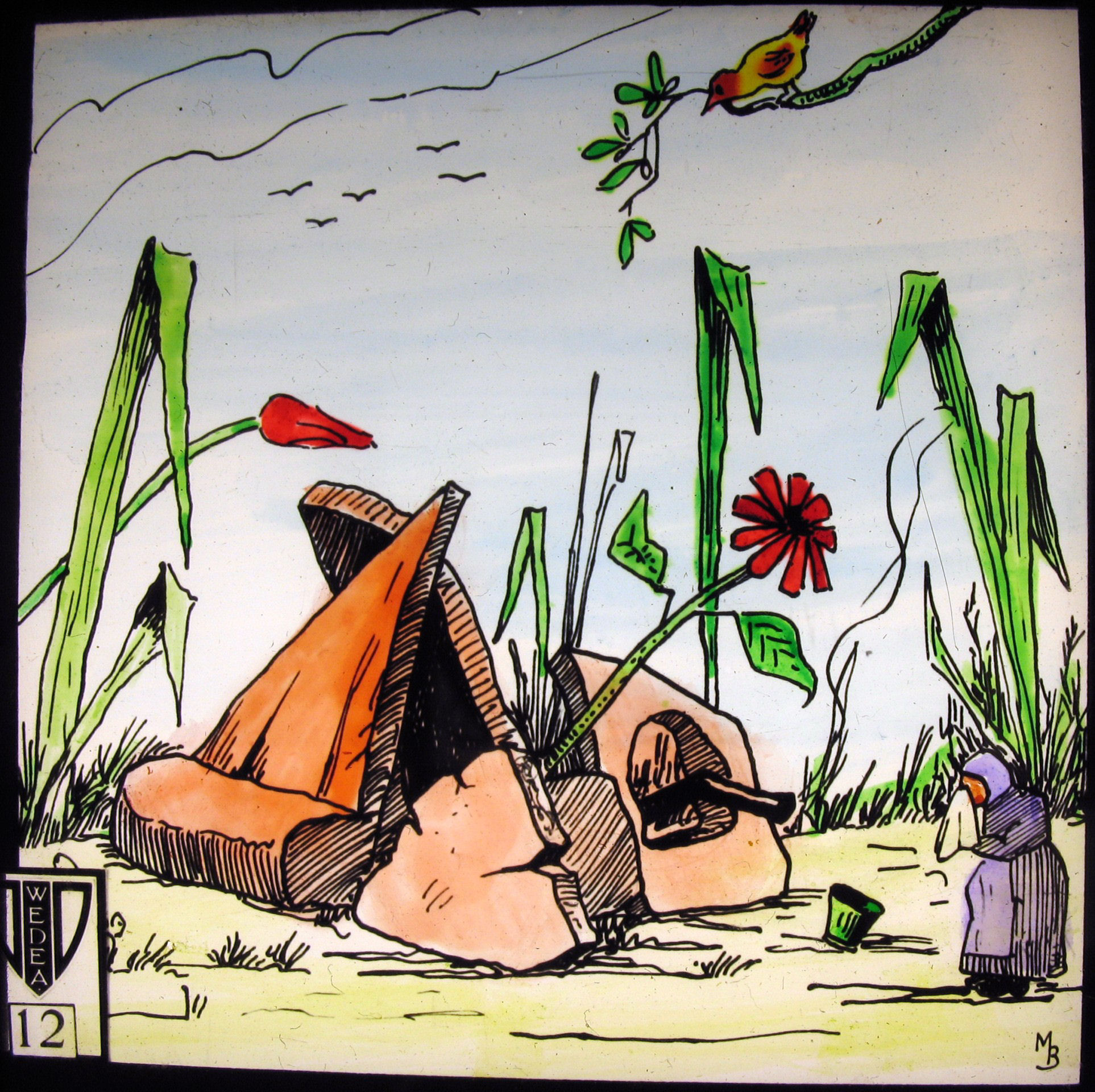 |
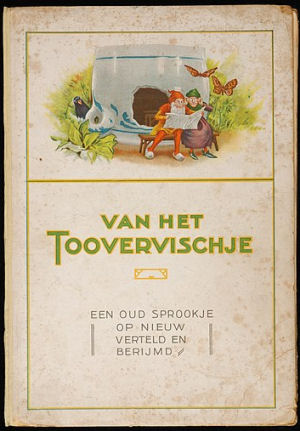 |
The Dutch coffee roaster Van Nelle used
this fairy tale for advertising campaigns. An employee of that company, L.C.
Steenhuizen adapted it, under the pseudonym Leopold, into a story in which the
gnome couple Piggelmee and his wife Tureluur play the leading role. This book
'Van het Toovervischje' (Of the Magic Fish) was published in 1920 by Van
Nelle. More parts appeared later. Van Nelle then continues to republish the
booklets. Later, in the 1950s, new Piggelmee books appeared again, written by
other authors and illustrated by Nans van Leeuwen. In het land der blonde duinen En niet heel ver van de zee, Woonde eens een dwergenpaartje En dat heette Piggelmee. |
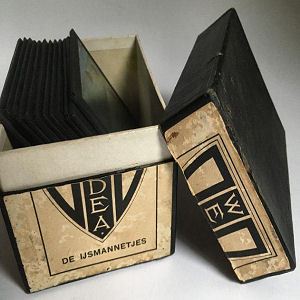 The box from publisher Wedea (not mentioned, but from Amsterdam, and also publisher of the City Series) contains 12 hand-coloured lantern slides with drawings in the format 8.2 x 8.2 cm, provided with a cover glass. |
De IJsmannetjes
- The little Ice men The Dutch story De IJsmannetjes by Jacq(ueline) van der Nagel was brought to bookstores in 1923 by G.B. van Goor and Sons from Gouda. The illustrations in the book are made by Enna (Elisabeth Francisca) Nieuwenhuis (Utrecht 5 May 1882 - Renkum 2 January 1971) who was married to J.D. Domela Nieuwenhuis Nyegaard. The initials MB are shown on some of the images in this series of lantern slides. Possibly it concerns here drawings by Johan Briedé (1886-1980) who sometimes signed with MB as a tribute to his wife (Mary Grietje Brandsma). They came in a long line, the ice-men who swept the ice rinks in the evening. And when they shone and gleamed in the morning like mirrors and the snow was lying in heaps, the people said: "Look, the wind cleared the ice rink last night!" - Those stupid people! The ice-men had done it, but they did not know that, because the little fellows always hide because they are afraid of those big, clumsy people. |
|
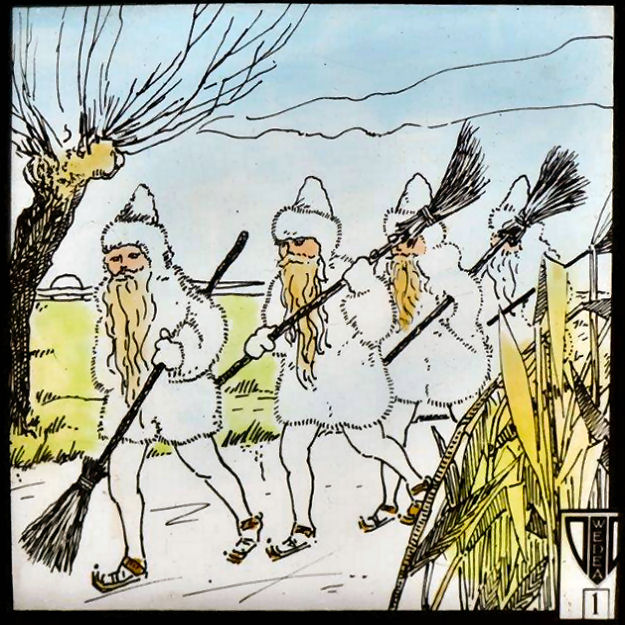 |
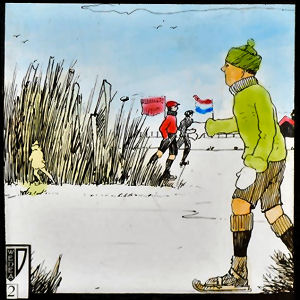 |
|
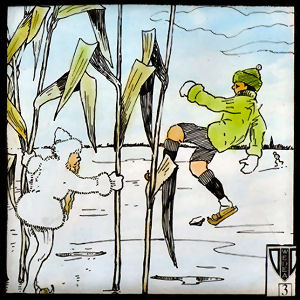 |
||
|
When Kees went
to see the rink where he would be held a riot race that afternoon early in the
morning, he saw an ice-man standing by the reeds in the distance. He thought it was a duck and threw a stone at him.
Luckily he missed, but the ice-man shook his fist with a fury and
shouted loudly: "Wait, I will not forget you!" That afternoon the ice-man was hiding among the reeds with a large chunk of ice in his hand, and when Kees drove past him, he threw the piece of ice right in front of his feet. Kees fell back on the ice and a thin stream of blood ran from his hat over the ice. |
||
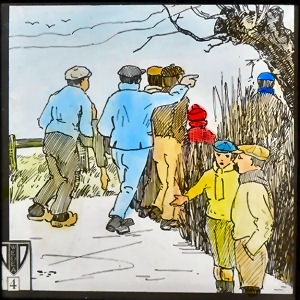 |
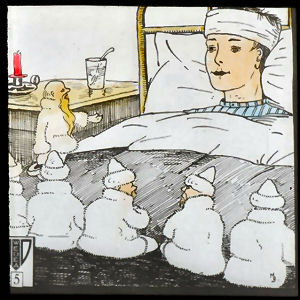 |
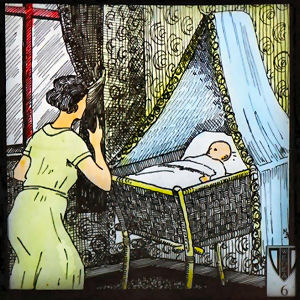 |
|
He was carried home by a
group of men. The ice-man was very shocked, because he had not meant it that
way. So he came up with a plan to make it up again. Kees had recovered, but had to stay in bed for a few days. Every night, when Mother had gone down, six little ice-men came sitting at the foot of his bed, telling him in turn a story about their lives. For instance how they once saved a baby when the stork that bore a baby crashed and they brought the baby to a young mother. |
||
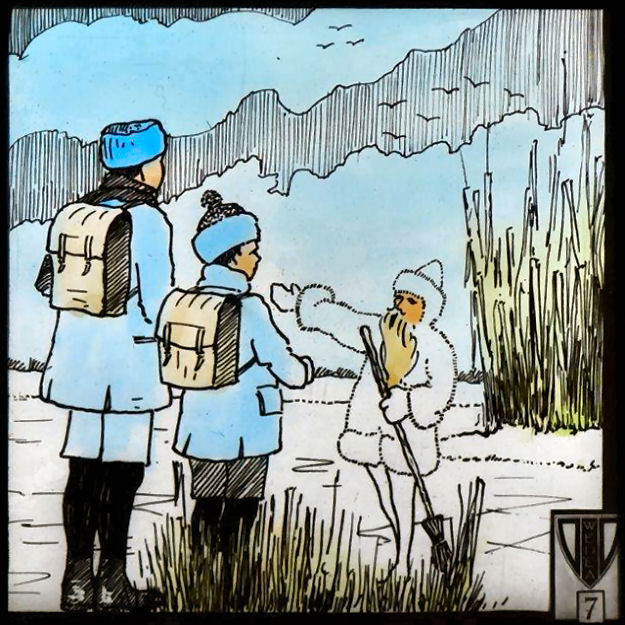 |
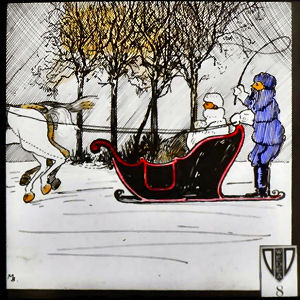 |
|
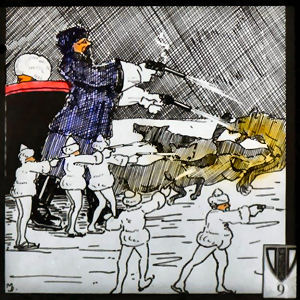 |
||
| They also brought home two brothers who were lost on the ice of the big lake, and when they were in distant Siberia, they saved a woman and her child, who were seated on the sleigh, were threatened by bloodthirsty wolves. They helped the coachman by shooting the wolves with their pistols. | ||
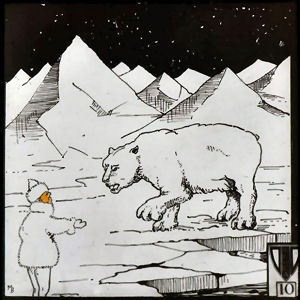 |
 |
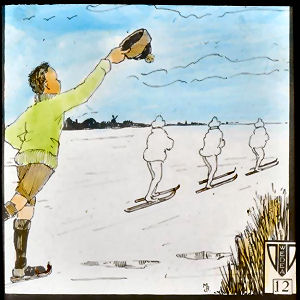 |
|
The fifth evening an ice-man
told about the North Pole and his encounter with a polar bear, who thought he
was his polar bear pup. The last ice-man said that in the spring the ice-men
would return to the high North. Their king lived there and they were accountable
to them for their good and bad deeds. Those who were angry, fiery, and ugly
would be banned. He confessed that he was the one who had thrown the lump of ice
at Kees and now he was afraid he would be punished by the king. Kees said that he was not crossed with him and that he had already made up for his deed by telling stories when he was sick. After all, he was the one who had thrown a stone first. Then the little man was cheerful and happy again, for he knew for sure that the king would forgive him. A week later the ice-men left for good and shortly thereafter the thaw fell. |
||
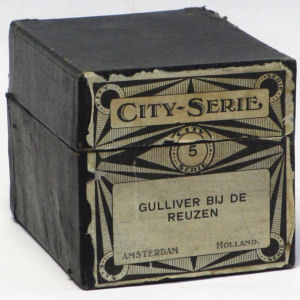 Gulliver's Travels is a 1726 satirical novel by Irish author Jonathan Swift. The full English title is: Travels into Several Remote Nations of the World, in Four Parts. By Lemuel Gulliver, First a Surgeon, and then a Captain of Several Ships. Swift's correspondence shows that he began Gulliver's Travels towards the end of 1720, and completed it in the autumn of 1725. This set of magic lantern slides from the Dutch manufacturer Wedea (City serie number 5) describes Gulliver's second journey, to Brobdingnag, the land of the Giants. |
Gulliver bij de Reuzen Gulliver with the Giants. During a severe storm, his ship is thrown off course. Arriving on land, the men disembark to fetch water. However, they are attacked by a man of enormous size who drives them back into the sea. Gulliver is left alone in a cornfield. There he is discovered by a giant of a man. The situation he finds himself in is exactly the opposite at this point to that in Lilliput: there he was the giant, here he is the dwarf. The man takes Gulliver home and leaves him in the care of his daughter, who treats him well and teaches him the language of the land. However, he is constantly in danger from huge rats and other creatures that prey on him. However, the farmer decides to exhibit Gulliver for money, from which his health seriously suffers. Then he is bought by the queen as a pet. He has a good life at court, but here too he has to be on the lookout for wasps, cats, dogs, a monkey and the queen's jealous 'dwarf'. He comes to realize that the people of Brobdingnag, despite their enormous size, are very kind-hearted and reject any form of tyranny and oppression. When Gulliver proudly explains the situation in England and Europe to the king, he is shocked and concludes that this must be a very inferior people. Two years later, during a trip to the coast, the specially built travel chest is picked up by a huge bird, who takes it and drops it into the sea. There he is discovered by an English ship and again he returns home. |
|
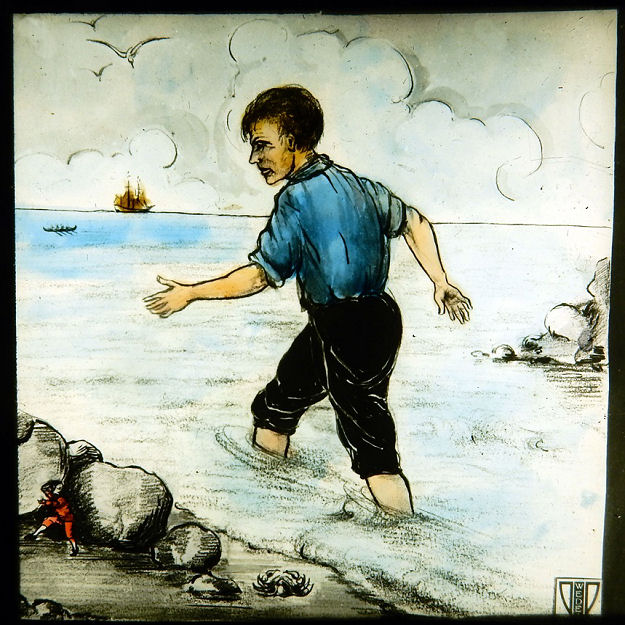 |
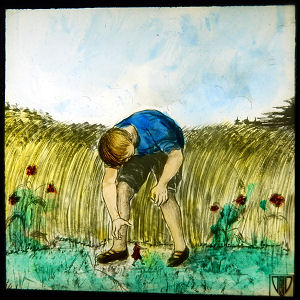 |
|
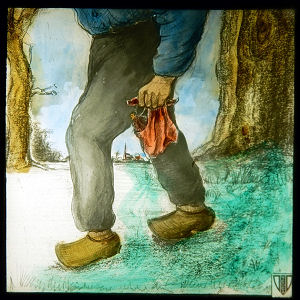 |
||
 |
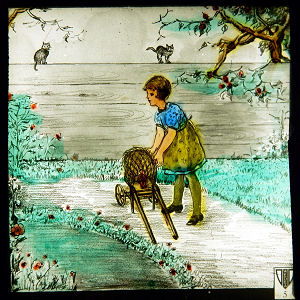 |
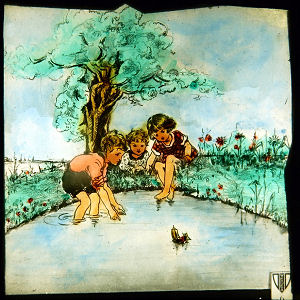 |
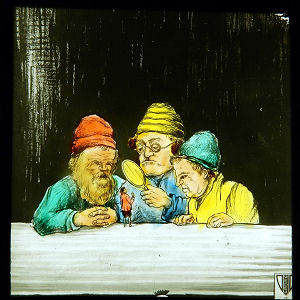 |
 |
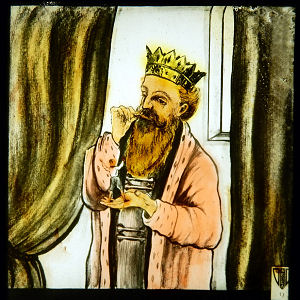 |
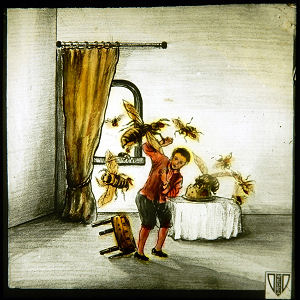 |
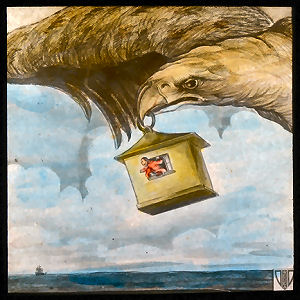 |
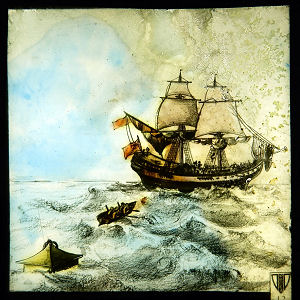 |
Roodkapje (Little Red Riding Hood) This well-known fairy tale was written down in the early 19th century by the brothers Jacob and Wilhelm Grimm in their 'Kinder- und Hausmärchen' under serial number KHM26. Another variant of the fairy tale was written earlier by Charles Perrault (1628-1703). Perrault's version differs from Grimm's especially at the end of the story. The story of Little Red Riding Hood is so well known that it needs no further explanation. |
|
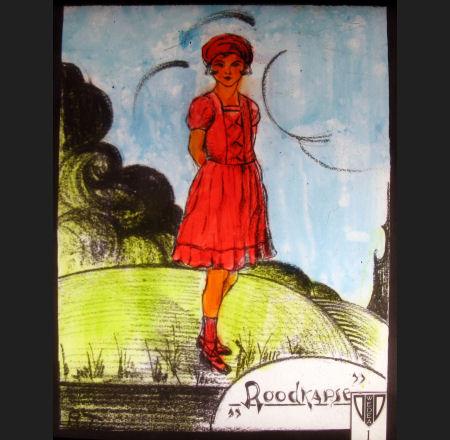 |
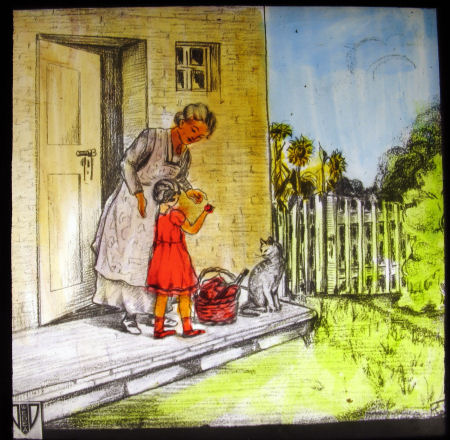 |
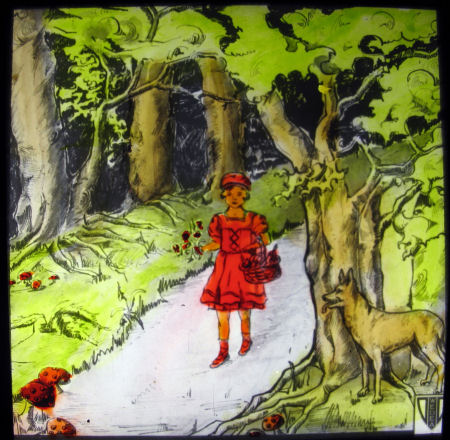 |
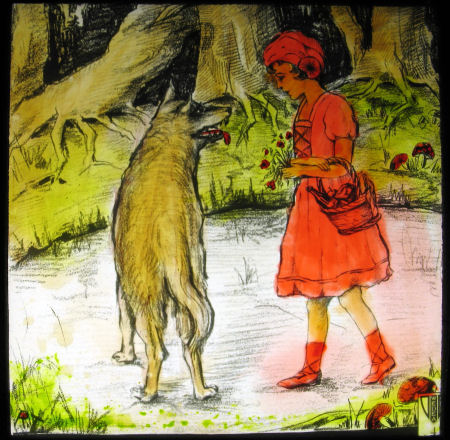 |
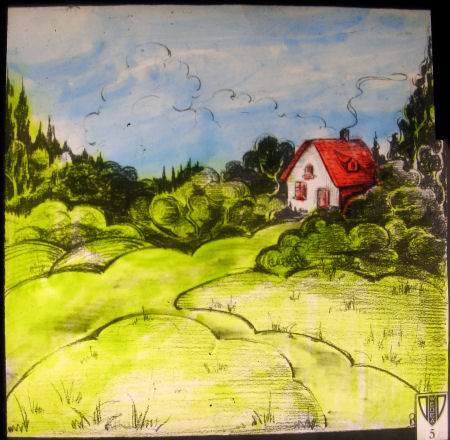 |
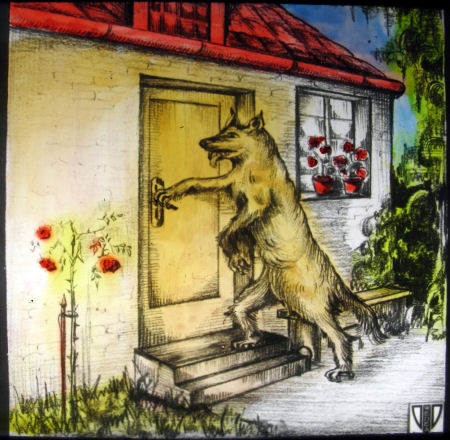 |
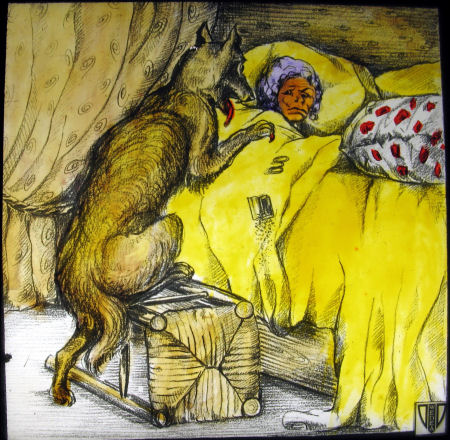 |
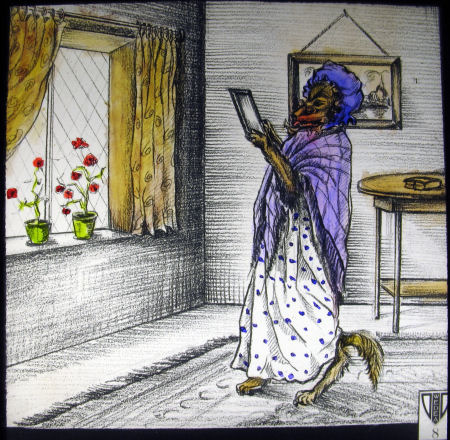 |
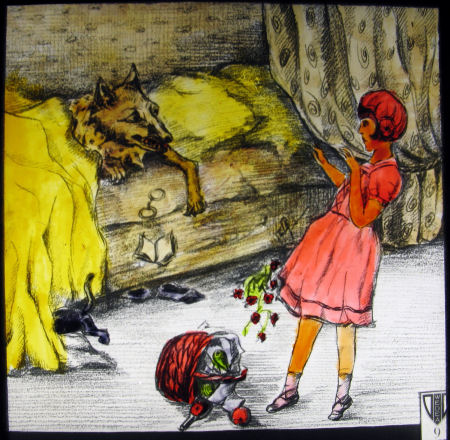 |
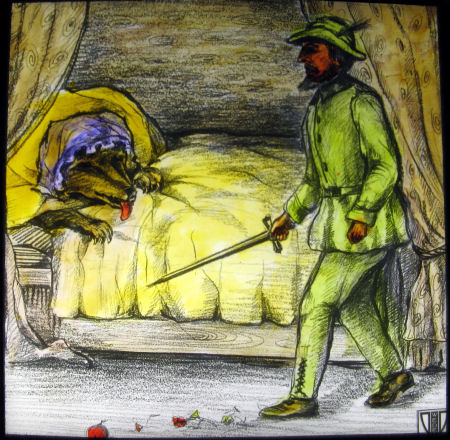 |
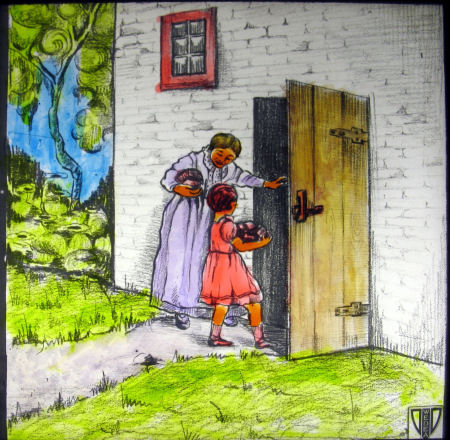 |
Unfortunately the last plate is missing,
but luckily we can read in the accompanying textbook how this fairy tale ended: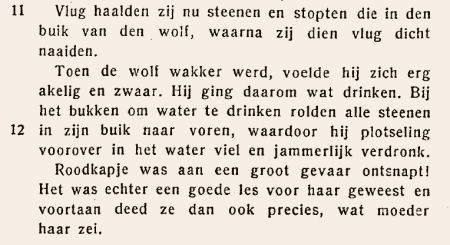 They got some stones and put them in the wolf's belly. When the wolf went to drink, he fell headfirst into the water and drowned. |
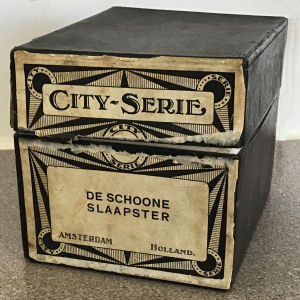 |
De schoone slaapster (Sleeping Beauty) This Dutch set of twelve magic lantern slides depicting the fairy tale of Sleeping Beauty was made by Wedea, as part 8 of their City Series. This set, like most of their other sets, has appeared in both a black and white and a colorized version. The last slide is unfortunately not available here in colour. A number of slides bear the artist's initials, 'RT'.
|
|
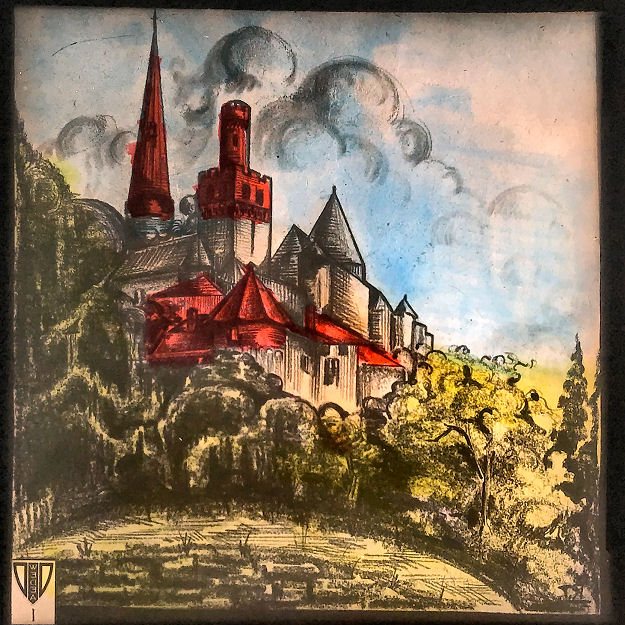 |
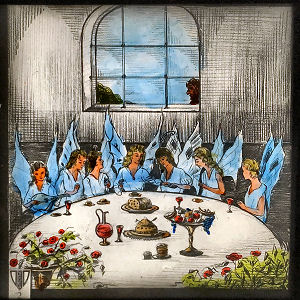 |
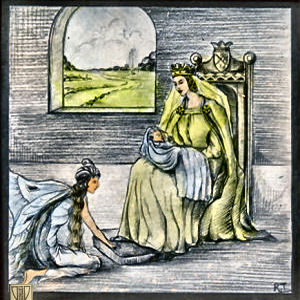 |
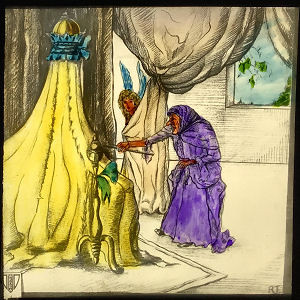 |
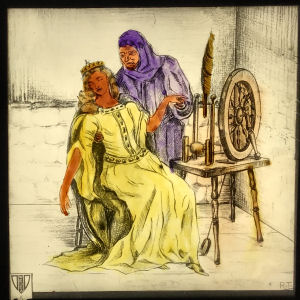 |
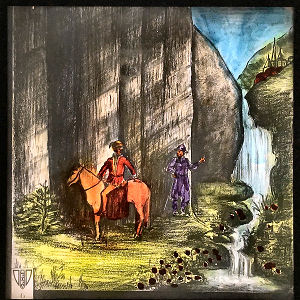 |
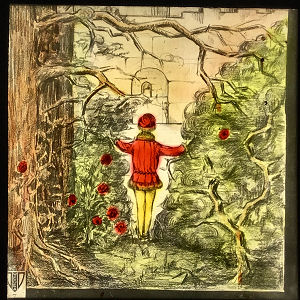 |
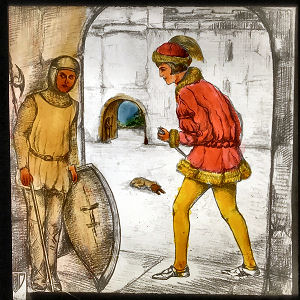 |
 |
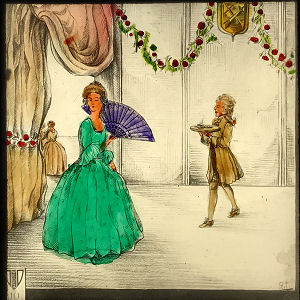 |
 |
|
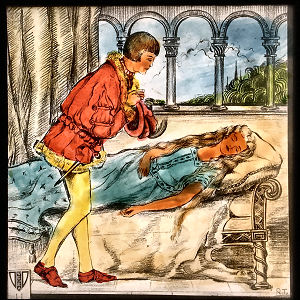 |
||
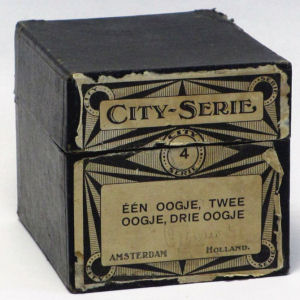 |
Eenoogje, tweeoogje en drieoogje (One-Eye, Two-Eyes, and Three-Eyes) A fairy tale from Kinder- und Hausmärchen with serial number KHM130, written by the Brothers Grimm. The original name is 'Einäuglein, Zweiäuglein und Dreiäuglein'. This fairy tale contains elements of some more well-known fairy tales. Volume 4 of the City Series contains 12 square slides measuring 8.2 x 8.2 cm. The slides are signed 'K.Ph', in all likelihood by Kate Philipsen, the woman who also drew the Tijl Uilenspiegel series. |
|
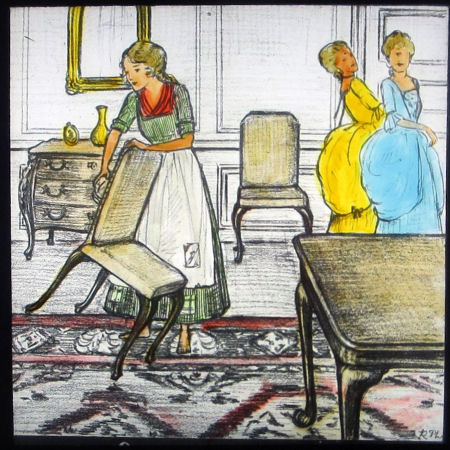 |
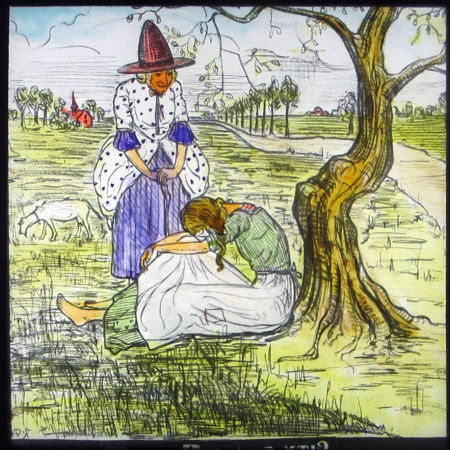 |
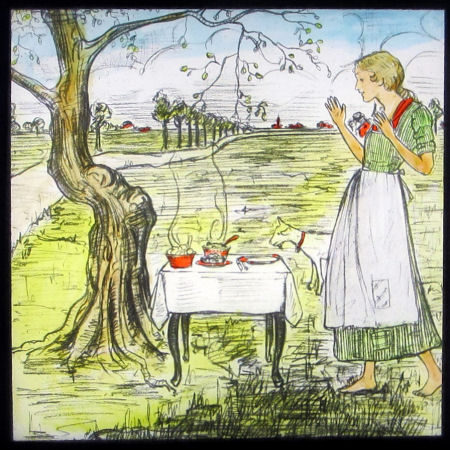 |
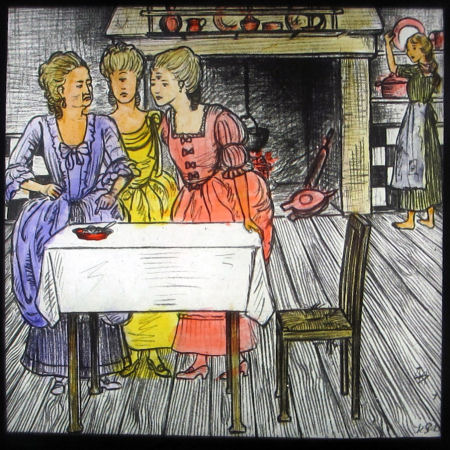 |
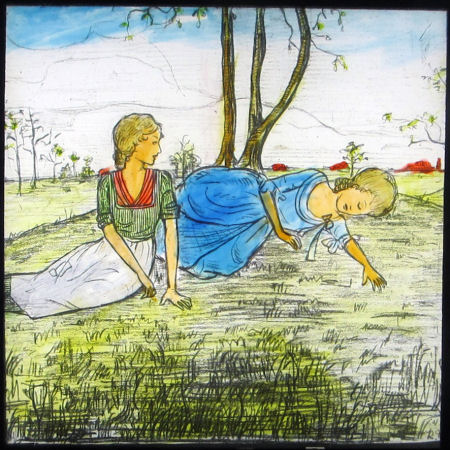 |
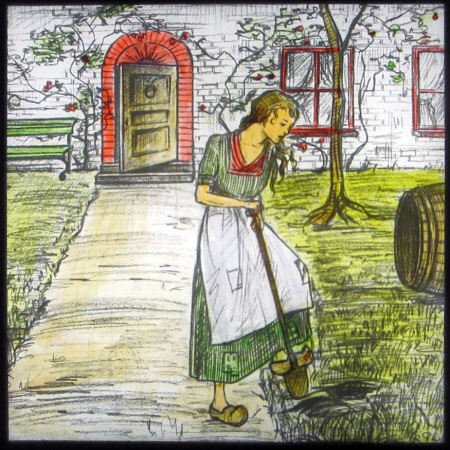 |
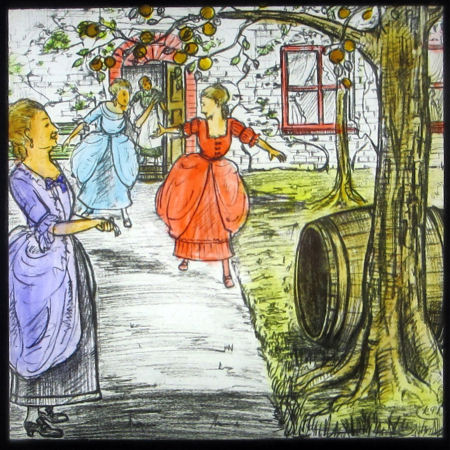 |
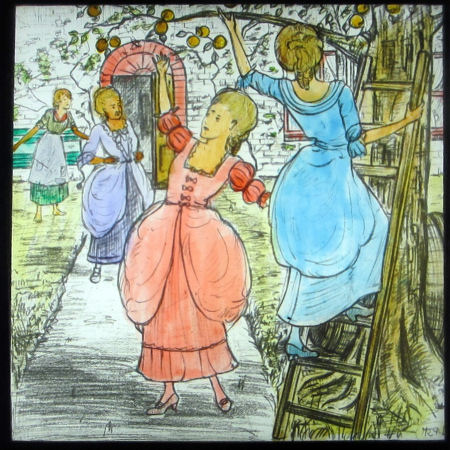 |
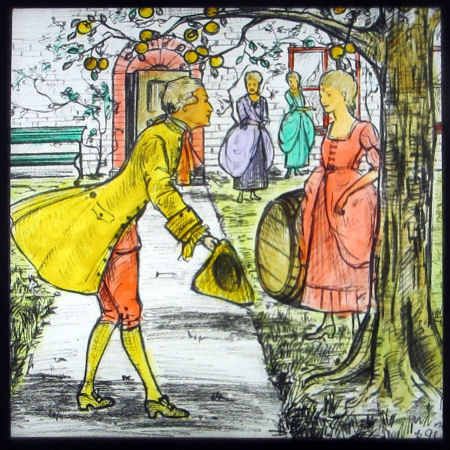 |
 |
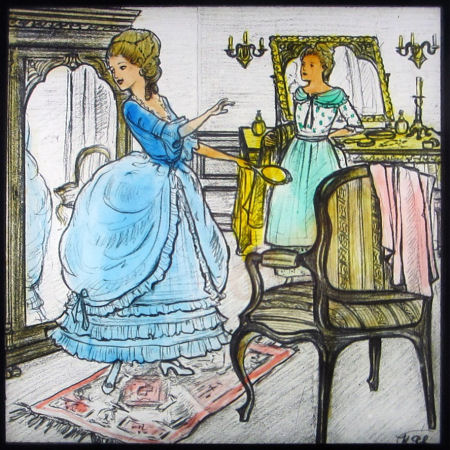 |
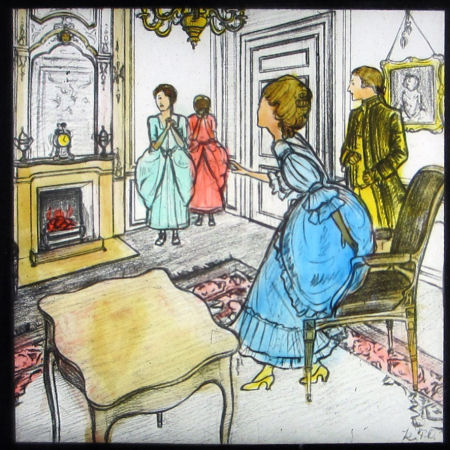 |
|
A mother has three daughters. The eldest
only has a single eye in the middle of her forehead, the second is common like
ordinary people, the third has three eyes. Because Two Eyes looks just like
normal humans, she is mistreated by her mother and sisters. They give her ugly
clothes and only leftovers to eat. An old woman teaches her how to summon a set
table when she yells "Little goat, bleat. Little table, appear". She also gives her a beautiful tree
with leaves of silver and fruits of gold that grows in front of their house. At the end of the story, as it should be in fairy tales, she meets a young knight who takes Two Eyes on his horse to his father's castle and the wedding is celebrated. The sisters are now even more jealous, but they are happy to still have the tree. The next morning, however, the tree has disappeared, it has followed Two Eyes and is now growing in front of her window. One day two poor women come to Two Eyes in the castle to ask for alms. Two Eyes recognizes her sisters and says they are welcome with her. She takes good care of her sisters who then repent of their sister's ill-treatment. |
|
| Below are three black and white magic lantern slides from two WEDEA series with the story of Robinson Crusoe. Probably also a coloured version of these series exist. The complete series with a total of 24 slides can be seen at Robinson Crusoe, part 1. | ||
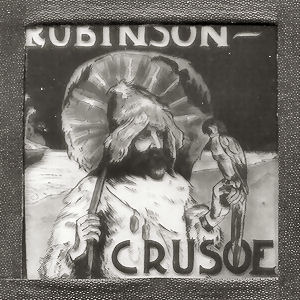 |
 |
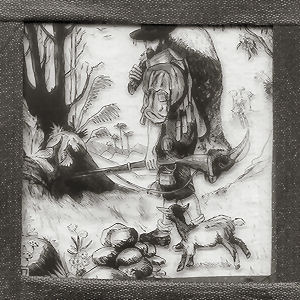 |
|
WEDEA also produced a number of slide series with photographic images, with titles such as Artis, Nederland, Volendam, Marken. Below are three examples from the City Serie No 35, Artis. |
||
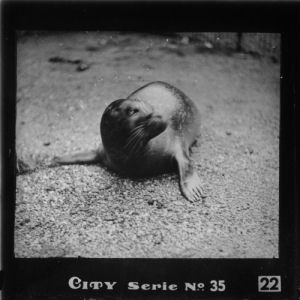 |
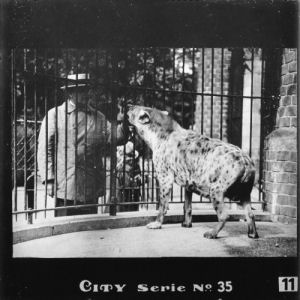 |
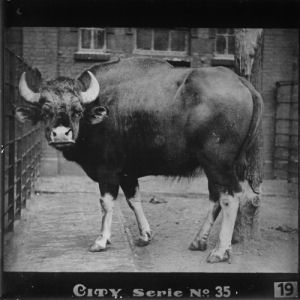 |
| |
©1997-2022 'de Luikerwaal' All rights reserved. Last update: 21-04-2022. |
|